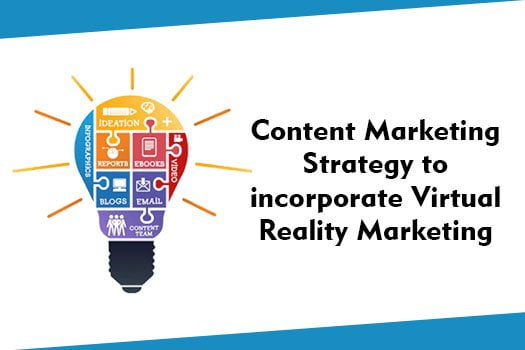Virtual Reality (VR) is a 3-dimensional, computer-generated environment which generates realistic images and other sensations to stimulate a user’s physical presence in a virtual or imaginary environment. The user becomes part of this imaginary world and able to perform a series of actions. The technology fully immerses the user. Virtual Reality is the latest emerging trend, and no brand can choose to be oblivious to it.
In today’s customer-driven world, a customer is all the more keen to engage and connect with the brand. There are numerous ways to do that, but the potential value offered by VR can’t be ignored anymore. With VR, this engagement and connection have taken a whole new meaning with customers looking for the more interactive experience than ever before. Many companies from different industries have begun to think about using VR for strengthening their brand through content marketing. VR enables the brand to be in complete control of the user experience. According to one survey, more than 70 % of respondents think a brand that uses VR is “forward thinking.”
Virtual Reality Content Marketing can be strategized in following ways.
Use VR to create an experience
Storytelling is influential in content marketing. With VR incorporated into it, the brand can be showcased in a way which was not possible earlier. Brands can show the user how the product looks like and educate them effectively on the way to consume the product. Users can get a further in-depth look at products with the ability to move, zoom, and rotate from every angle. VR technology can be used to create a memorable experience for the customers thereby ensuring a high degree of user involvement and interest.
An astonishing experience can be created for the user by:
- Giving virtual product and store walkthrough
- Giving virtual walkthrough of the town and city where the company is located.
- Virtual house tour walk for potential home buyers
- allowing them to see how a product will look in their own home through VR thus encouraging them to buy the product.
Use VR for existing content
Since videos resonate much better with users; the number of people watching videos and animations has risen steadily over the years. VR technology can be used to enhance this experience by incorporating it into the existing videos. It can be a natural extension of the already made video content.
Though new content will still have to be created for VR, You can target distant customers with VR technology. Content can be crafted and showcased to a broader range of audience. Like an impressive virtual tour of your store can help build the confidence of the customer in another continent about the product and scale of your business.
Use user-generated content
Brand should allow the users to contribute their VR videos. User-generated content has proved to be beneficial for the companies, and many have used it for brand promotion. There are various tools available which can facilitate to integrate user-produced VR videos.
Conclusion
In coming years, more serious uses of Virtual Reality can be expected. Content writers should embed newer content with VR technology and should be more open to taking virtual risks. You might also seek help from SEO services provider in Delhi to develop a Content Marketing Strategy incorporating Virtual Reality Marketing as well.







Good tips to follow.
Thanks Phillip 🙂
This article is quite informative.
Thanks Michael 🙂